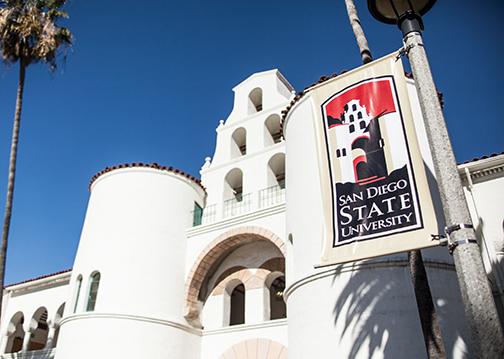Luke Henning, Assistant News Editor
Budget cuts and fee increases aren’t new to San Diego State students. However, the budget itself—where the money comes from and where it goes—isn’t always thoroughly explained. In light of a fee increase currently being discussed on campus, The Aztec is explaining the budget in a new four-part series that will publish the next three Mondays.
SDSU’s $721.3 million budget can essentially be broken down into three groups. First, there’s the university operating fund budget, consisting primarily of what students usually think of when talking about the budget: tuition and fees, and state money. At $328.4 million this is the single largest section of the budget.
Second, there’s “designated revenues,” which includes everything from parking fees and citations to money the athletics department gets from things like ticket sales and corporate sponsorships. These come in at a total of $88.8 million.
Third, there are the four nonprofit auxiliary corporations: Associated Students, Aztec Shops Inc., The Campanile Foundation and the SDSU Research Foundation. These combine for a total of $254.1 million, with the largest by far being Aztec Shops with a budget of $60.5 million. However, the research foundation also manages the university’s $118 million endowment.
For now, we’ll focus on the operating budget part of the overall budget. It’s the simplest because it only has three sources of revenue: $143.4 million from state appropriations, $143.3 million from tuition and fees, and $41.7 million from revenue-based and cost recovery sources. This comes to a total operating budget of $328.4 million.
The California State University system distributes the more than $2.3 billion it gets from Californian taxpayers to each of the 23 schools within the system based on each school’s enrollment, CSU Administrative Support Coordinator Liz Chapin said.
“Because of the varying sizes and needs of the different schools within the CSU system not all the schools are given the same amount of money,” Chapin said.
Though SDSU was given $143.4 million from the system this past year, this money only accounts for roughly 20 percent of SDSU’s total budget.
In 2008, SDSU received $221 million from the CSU system but the financial crash during that year eventually led to heavy cuts in the CSU budget. During the course of the past five years these cuts have left SDSU with an almost $80 million gap in funding.
One way to make up for the loss of state funding was increased tuition and fees. Since 2008 per semester, tuition and fees for a full-time student at SDSU has increased by $1,506. However, since 2007 the school experienced an almost 14 percent decrease in total enrollment to its lowest point in 2011-12.
That means that even as tuition and fees increased, the number of students paying fell and the school budget couldn’t fully recover. There has been modest student growth the last two years but total enrollment is still less than it was in 2004.
Tuition and fee increases remain the most viable way to increase and maintain the SDSU budget. The proposed Student Success Fee is the latest attempt to make up for large-scale reductions in faculty caused by the cuts in state funding.
Tuition and fees at SDSU are set by the CSU chancellor at the same base rate of $5,472 a year for students taking more than six units a semester across the entire CSU system.
On top of this mandatory fee schools can also petition to raise fees though any fee changes eventually have to go through the chancellor’s office.
Generally, fee increases at SDSU originate in the Campus Fee Advisory Committee, which is made of a combination of students and faculty. This group then makes recommendations to President Elliot Hirshman who requests a fee increase from the CSU chancellor, CFAC member and Associate Vice President for Academic Affairs Kathy LaMaster said.
“The chancellor will only act on a recommendation if it is shown to have support from the students,” LaMaster said.
From 2011 to 2013 record-high tuition and fees accounted for the largest share of the SDSU operating budget. In 2012-13 students accounted for almost twice as much of the school funding as state allocations.
The final piece of the operating budget is made up of revenue-based and cost recovery sources. This revenue source was introduced in 2008 to supplement the tightening budget.
This category includes lab fees and other use fees for services within SDSU. The university has slowly been expanding this category, though it is generally regulated on a department-to-department basis.
Check out the coming issues of The Aztec and www.thedailyaztec.com, as we explain where all this money goes, as well as how fundraising has accelerated at SDSU.










